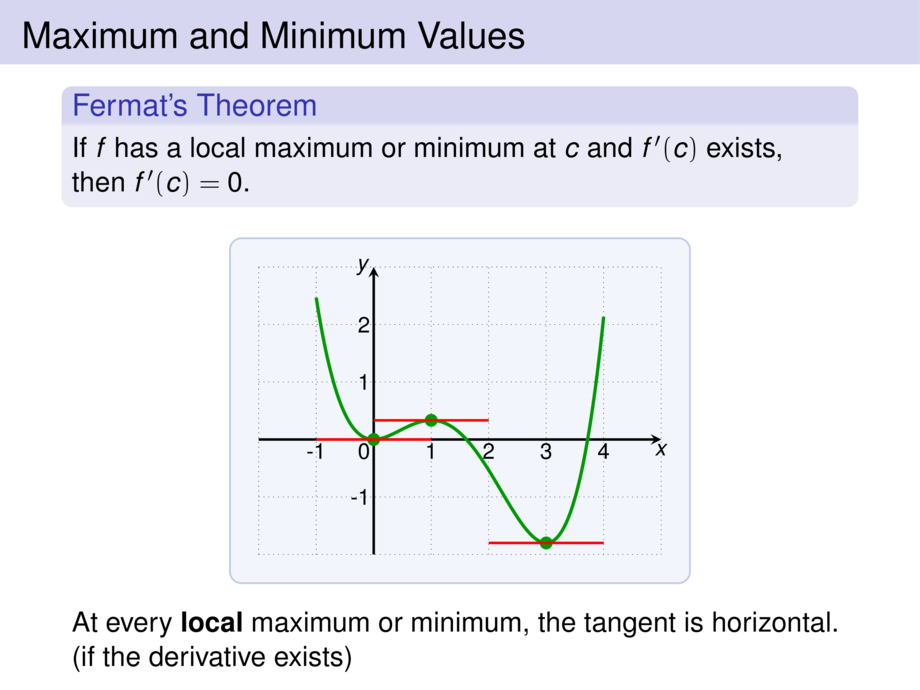



































































































93/209
\begin{frame}
\frametitle{Maximum and Minimum Values}
\begin{block}{Fermat's Theorem}
If $f$ has a local maximum or minimum at $c$ and $f'(c)$ exists, \\
then $f'(c) = 0$.
\end{block}
\pause\medskip
\begin{center}
\scalebox{.8}{
\begin{tikzpicture}[default,baseline=1cm]
\diagram{-2}{5}{-2}{3}{1}
\diagramannotatey{-1,1,2}
\diagramannotatex{-1,1,2,3,4}
\diagramannotatez
\begin{scope}[cgreen,ultra thick]
\draw plot[smooth,domain=-1:4,samples=200] function{(3*x**4 - 16*x**3 + 18*x**2)/15};
\end{scope}
\begin{scope}[very thick]
\node[cgreen,include] (a) at (0,0) {};
\draw[cred] ($(a)+(-1cm,0)$) -- ($(a)+(1cm,0)$);
\node[cgreen,include] (a) at (1,5/15) {};
\draw[cred] ($(a)+(-1cm,0)$) -- ($(a)+(1cm,0)$);
\node[cgreen,include] (a) at (3,-27/15) {};
\draw[cred] ($(a)+(-1cm,0)$) -- ($(a)+(1cm,0)$);
\end{scope}
\end{tikzpicture}
}
\end{center}
\pause\medskip
At every \emph{local} maximum or minimum, the tangent is horizontal.\\
(if the derivative exists)
\vspace{10cm}
\end{frame}

